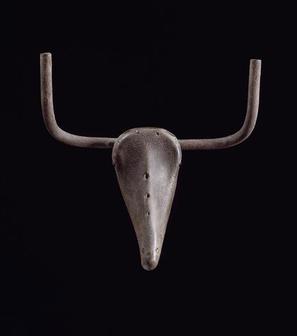
Innovation is exhilarating. We aspire to innovate, be creative, and do something that makes a difference. Creative geniuses like Pablo Picasso put existing pieces together in new ways. For example, his 1942 creation “Bull’s Head” is a found object work that combined the handlebars and seat of a bicycle to evoke a bull’s head. Notice that he innovated with commonly found objects made of a traditional material. As a result, Picasso changed our ways of thinking and inspired those in the art world and beyond.
Libraries, archives, and museums (LAMs) have no shortage of “pieces” for innovating thinking. They have every type of handlebar and seat imaginable.
The Community Catalyst Initiative of IMLS asks LAMs and their non-profit collaborators to innovate by putting together existing “pieces” to spark rapid change in their communities. We’ve learned from case studies and town hall-like meetings that finding innovative ways to catalyze community change and improve community wellbeing are key motivators for LAMs. We’ve re-issued the Community Catalyst funding opportunity for a second year to help make those motivations a reality.
As you consider applying for a 2018 Community Catalyst grant, reflect on ideas, or “pieces,” (e.g., existing programs, productive partnerships, or emerging movements) that are ready for recombination. Will they together catalyze a positive community “reaction”? The 2018 funding opportunity focuses on applying existing community development approaches and tools to strengthen LAMs’ abilities to “spark” change. This funding opportunity is focused on helping grantees set up the right conditions to make change happen with their communities.
As part of a Community Catalyst grant, IMLS will provide technical assistance and support so that each grantee can assess their project’s progress. Using a developmental evaluation perspective will provide an objective, external review of each grantee’s project. Depending on each project’s goals and community context, such an evaluation could examine a range of questions, such as: How you do you seek inspiration from your community? Who are community partners who can contribute essential “pieces” to your project? How do you and your community define success for your project? How are you using community development practices?
In addition, an evaluation across all Community Catalyst grantees may help answer other important questions, such as: How does organizational readiness influence LAMs’ abilities to innovate in their community work? What are the benefits to grantees from interacting with each other and sharing learnings as their projects unfold?
Innovation is exhilarating but can also be hard work to plan and deliver the end result. Even if you work in a small organization and feel you do not have the capacity to manage a federal grant, we encourage you to consider this funding opportunity. Alternative approaches such as creating formal or informal networks within a community and applying together could also be an option.
Pablo Picasso’s “Bull’s Head” can change how we think about everyday things such as transportation and domesticated animals. It can also challenge how we think about the human-engineered environment and even the concept of creativity itself. Picasso took what he had available and catalyzed a change in thinking. At IMLS, we are looking to further strengthen your ability to innovate and contribute to community change using the “pieces” your institutions have at hand.

About the Author
Dr. Kathryn K. Matthew was confirmed by the Senate in September 2015 as the 5th director of the Institute of Museum and Library Services. You can send her comments on the Community Catalyst Initiative by emailing communities@imls.gov